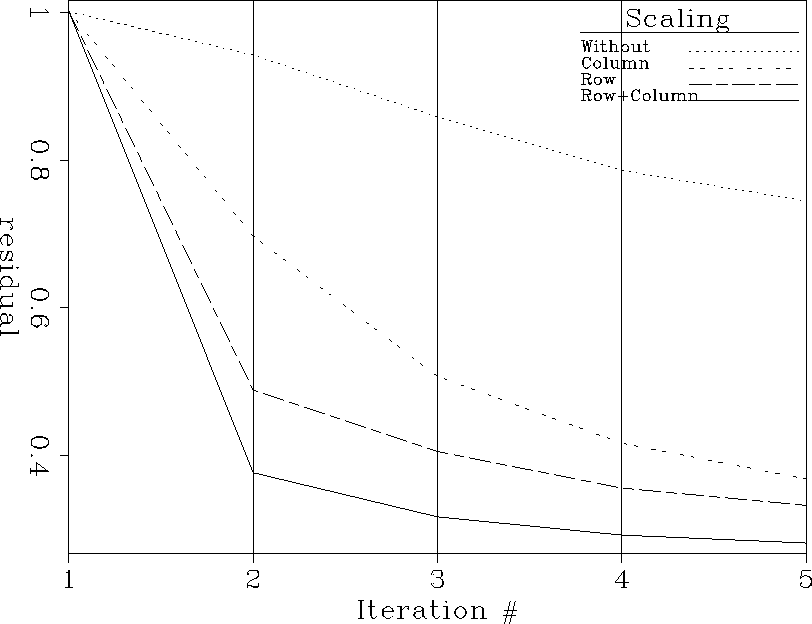Proper balancing of the matrix
![]() can be achieved by scaling in both data space and model space.
However, applying either diagonal
transformation ensures common magnitude of the elements of
can be achieved by scaling in both data space and model space.
However, applying either diagonal
transformation ensures common magnitude of the elements of ![]() .The diagonal operators
.The diagonal operators ![]() and
and ![]() have physical units inverse to
have physical units inverse to ![]() .
Therefore applying both of them can only result into an ill-conditioned
system where the matrix
.
Therefore applying both of them can only result into an ill-conditioned
system where the matrix ![]() has the inverse of its original units.
has the inverse of its original units.
I propose a new formulation for balancing the matrix ![]() by scaling both
its rows and columns. The new formulation introduces a new parameter n,
and solves the system
by scaling both
its rows and columns. The new formulation introduces a new parameter n,
and solves the system
| (58) |
where ![]() .
.
For n=0, the system prec-both reduces to the case of column scaling, whereas for n=1 it reduces to applying row scaling in the data space. As Figure residual shows, the diagonal transformation has proved to be a suitable preconditioner for the linear system. A good solution was obtained after 5 to 8 iterations of conjugate gradient solver. The column scaling improved the convergence of the iterative solution and resulted into faster convergence than the row scaling. A better convergence was achieved by applying a scaling to both the data space and model space for a value of n=1/2. An optimal value of n should probably depend on wether the system to be solved is mostly over-determined or under-determined. This should remain an interesting subject of investigation.
 |